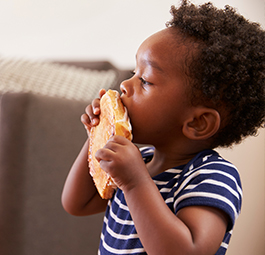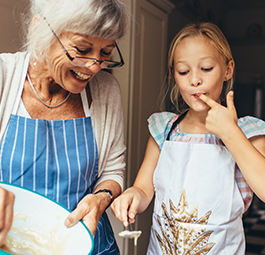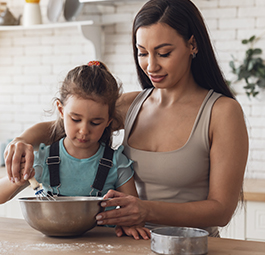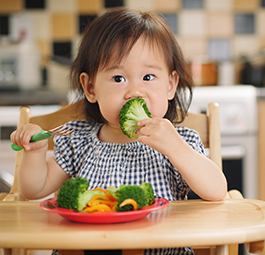Dad’s Grilled Chicken



Recipe Information
Ingredients
Directions
Dad’s recipe for whole roast chicken is one of the best, least greasy chicken recipes I’ve ever tried.
This may be done on the grill or inside. The seasonings are very flexible and may be adapted to your personal taste / allergy set.
Basics:
Assume 1 quarter chicken per person, plus whatever you want for leftovers, plus an extra quarter or two for anyone that might find it particularly tasty.
Skin the chicken. Kitchen shears help this go quickly.
Skinning is important to the flavor. It means you put the seasonings directly on the meat, eliminate a lot of the fat, and allow the *meat* to seal rather than the skin. The result is not dry due to cooking temperatures and method — except for the wingtips, which get crunchy and delicious. Leave a strip down the back and skin on the wings and the ends of the legs, because those parts dry out more and are harder to skin anyway. Remove all skin from breast and thigh.
Now, if cooking on a propane grill, heat the grill on “high” while you skin the chicken. It should get up to near 500 °F. This is important, as it will “seal” the outer layer of the bird and keep the moisture in. You will not cook at this temp, just *start*. For grill cooking, a foil pan is a tremendous help–they cost about $1 each and make cleanup much simpler. You’ll need one for every two birds.
If cooking in an oven, preheat to about 450 °F. Use a black roaster for the birds, or a foil roaster if you prefer the ease of cleanup. You won’t need the lid, unless the bird is brown but not cooked through at some point.
Prepare seasoning mixture and rub on birds. Options include simply seasoning salt, OR poultry seasoning, OR a blend of crushed garlic, dry basil and seasoned salt, OR a blend of salt, cumin, chili powder, a little cayenne, garlic and onion powders. The critical factor in the rub is that it contain some salt–this helps seal the surface of the meat to keep it moist enough.
Now, put the chickens in the pan(s), turning them with one hand while sprinkling them with rub with the other, so they are covered. You can use quite a lot of rub. I like to cook the birds breast-down–the back skin gets crunchy and the breast stays moist. If you like crunchy wing-tips, pull the wings up so the tips aren’t hiding under the bird.
Once the birds are in the pan, put them in the oven or grill, close the door/lid, and immediately turn down the heat. On Dad’s grill, we turn off the middle burner and put both front and back burner halfway between low and medium. This results in a cooking temp of 300-325 °F. In the oven, we just turn it down to 300 °F and leave the door *closed* for the next 20 minutes or so–no peeking while the chicken is sealing! This means that the cooking temp starts at about 450-475 °F; and drops gradually over the next little while. If you’re paranoid about a dry bird, take a cleaned can, fill it with a little water, beer, wine, broth or whatever suits your fancy, and put it in the oven *next* to the pan. This will create a moist environment for the rest of cooking–I would not do this until the birds have been cooking about a half hour, and it’s usually not necessary.
Use a meat thermometer to test the birds for doneness. There should be *no* pink juices, and the thermometer for poultry should read 185 at the thickest part of the bird, usually the junction between leg and thigh. Most birds will cook in an hour to an hour and a half. They’re often “falling apart done” when we take ’em out.
This is one recipe where you will NOT miss the skin… because the surface gets sealed and all the flavor is right there.
Notes
Substitutions















